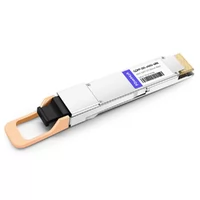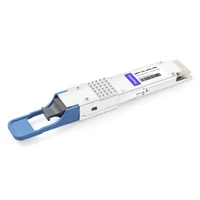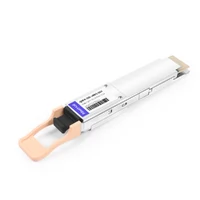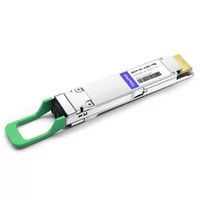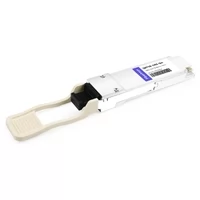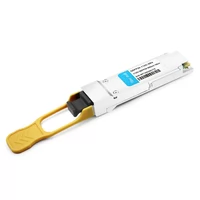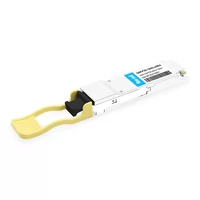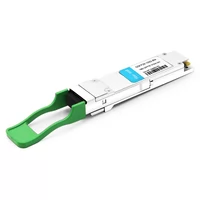In the fast-changing world of information exchange, it’s really important to select the right transceiver form factor for a network to perform its best. This article analyzes two major form factors: QSFP-DD (Quad Small Form-factor Pluggable Double Density) and QSFP28 (Quad Small Form-factor Pluggable 28). We believe that by studying their specifications, capabilities, and application areas, readers will be able to understand these technologies better, as well as see how they differ from one another and what this means for contemporary networking solutions. If you are a network engineer or procurement specialist who deals with optical connectivity – or just someone keen on this topic – then after reading our comparison, you should have enough knowledge about it so that any decisions made in relation to infrastructure projects can be considered well-founded.
Table of Contents
ToggleWhat is QSFP-DD, and how does it differ from QSFP?
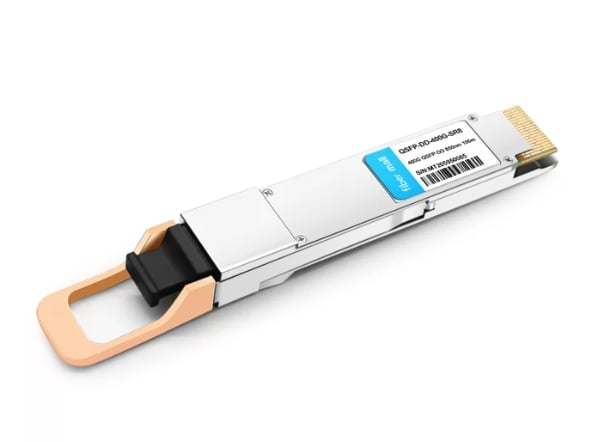
QSFP-DD Overview
QSFP-DD, or Quad Small Form-factor Pluggable Double Density, is a next-generation transceiver form factor that increases bandwidth capacity and meets the needs of data centers and high-performance computing environments. The device operates at 400 Gbps standard, which is achieved by doubling the electrical and optical interfaces of its predecessor – QSFP28, while maintaining compatibility with existing QSFP infrastructure. With a larger footprint than other form factors, this type can support more lanes and thus higher data rates, making it ideal for cloud computing applications, among others, such as enterprise networking and telecommunications, where long-range or short-range data transmission capabilities are required for modern networking solutions ensure continuous connectivity together with scalability.
Comparison with Traditional QSFP Modules
There are several notable differences between these two types when comparing them against each other. First off, density has been doubled in this new model, thereby allowing it to support up to 400 Gbps using eight lanes at 50Gbps per lane while standard modules max out at 100Gbps through four lanes operating on 25Gbps each. Also, backward compatibility plays an important role here, too, since they share the same dimensions as older versions like those used in today’s networks and can easily accommodate one without having any physical changes made upon connection. Additionally, heating improvements have also been done in order for these devices to work properly, especially when located within densely populated data centers where space may be limited, but power levels must remain high enough so as not to compromise functionality. In general terms, then, we can say that apart from satisfying increasing demands for capacities scaling up communications links between different equipment points-of-presence within our current internet architecture, another thing that makes Q S F P D D unique compared to traditional Q S F P modules is flexibility along with compatibility advantages realized.
Key Advantages of QSFP-DD
- More Bandwidth: Supports up to 400 Gbps with 400G QSFP-DD, twice as much capacity as any other traditional QSFP module.
- Backward Compatibility: Works seamlessly within an existing QSFP infrastructure thus protecting investments made in the past.
- Higher Density: Eight lanes each rated at 50 Gbps makes it possible for this device type to offer a larger data transmission density than any other.
- Better Heat Management Ability: High performance computing centers require higher levels of power which can only be supported by improved cooling systems incorporated into these modules.
- Flexibility: It is designed such that it can be used either for short-range or long-range applications depending on what you need in your network.
Comparison of the QSFP28 Form Factor and QSFP-DD Form Factor
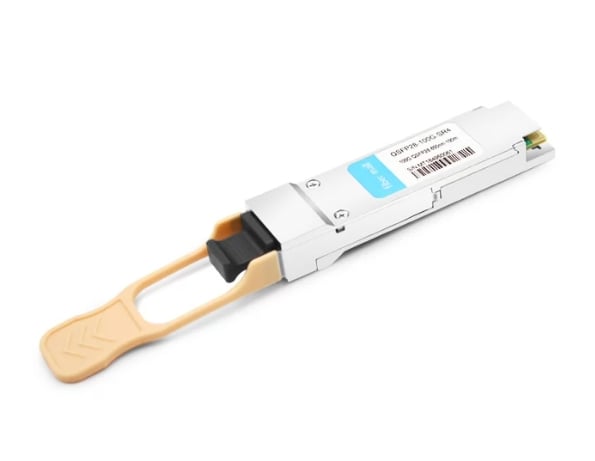
Definition of the QSFP28 Form Factor
A high-density four-channel optical transceiver designed for data rates up to 100 Gbps is known as the QSFP28 form factor. This speed is achieved by using four 25 Gbps lanes, making it ideal for applications that require a lot of bandwidth, such as data centers and high-performance computing environments. It is backward compatible with previous versions, which makes it possible to integrate into existing systems easily while being compact in size compared to OSFP connectors for high-speed networking. In addition, robust thermal management features are part of its design hence ensuring reliability under different environmental conditions. Moreover, this flexibility means that it can be used for both copper cabling options or fiber optics, depending on what suits best any given deployment scenario.
QSFP-DD: A New Generation Of Form Factors
QSFP-DD (Quad Small Form-factor Pluggable Double Density) transceivers are an evolution from QSFP28s designed specifically for higher data rates and better network efficiency due to growing demands in this area over time. To achieve up to 400Gbps transmissions, they have eight channels instead of four like their predecessors, doubling lane density, which can be used by each channel individually or aggregated together if need be – providing more flexibility when designing networks at different capacities; also backward compatible with any other interface used within current systems so no additional changes will need to made here either. Additionally, these devices have been made so as to take into account enhanced thermal management requirements for higher power applications without affecting performance levels thus making them very useful; besides, they follow a modular approach that allows them to support many types of networking needs ranging from small businesses looking forward building own data centers up large enterprises implementing private clouds where huge amounts information are stored.
Size & Compatibility Considerations
When deploying QSFP-DD transceivers, one should consider physical sizes as well as compatibility issues associated with existing infrastructures. The size of a QSFP-DD is similar to that of QSFP28, which means it can easily fit into most current network devices without much changes being done in terms of design; however, operators need to ensure their networking equipment are capable of supporting extra power and cooling requirements brought about by 400Gbps operations so as avoid any failures here on this part. Moreover, backwardness in functionality should also be checked against legacy systems, especially if there have been any firmware or hardware adjustments made to accommodate higher data rates together with channel configurations.
Performance: QSFP-DD vs. QSFP28 in Data Rate
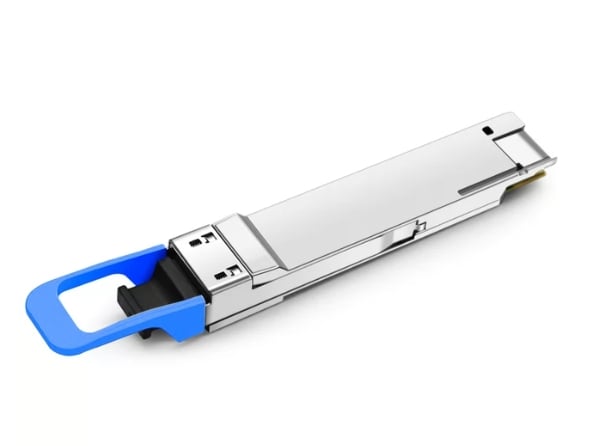
Data Rate Capabilities of QSFP-DD
According to the manufacturers, a QSFP-DD transceiver can support data rates of up to 400 Gbps, which is twice as much as that can be supported by its predecessor, the QSFP28, limited at 100 Gbps. This improvement is done using eight channels instead of four for better bandwidth efficiency. The other thing about this technology is that it allows for different configurations such as 200GBps or even lower ones like 100Gbps so that they may suit various networking needs while still being compatible with QSFP28.
Data Rate Capabilities of QSFP28
Basically, a QSFP28 transceiver was designed to handle up to 100 gigabits per second (Gbps) through four channels, each of which has a capacity of transmitting at most 25Gbps. These devices were built specifically for use within high-speed data centers and enterprise networks where large volumes of information need to be exchanged between different points within short periods of time. However, although they are able to satisfy present-day demands in terms of throughput, their scalability remains questionable compared with those provided by next-generation standards like QSFPDD, thus restricting their usage mostly in environments requiring wider bandwidths.
Implications for Data Centers
The main implication behind shifting from QPSF28 towards 400G QSPFDD lies in elevating overall performance levels exhibited by data centers through increasing the number of bits transmitted simultaneously (i.e., higher throughput). In other words, with such an upgrade, it becomes possible not only to process larger amounts but also to store them more efficiently, which is essential considering current trends toward cloud computing coupled with big data analytics. Additionally, the adoption of these technologies usually leads to reducing power consumption per gigabit, thereby optimizing energy utilization across various sectors involved in network design and implementation processes. Nevertheless, one should take into account both backward compatibility issues as well as potential infrastructural changes that might arise during integration stages so that everything works fine together.
Comparison of Power Consumption: QSFP-DD and QSFP28
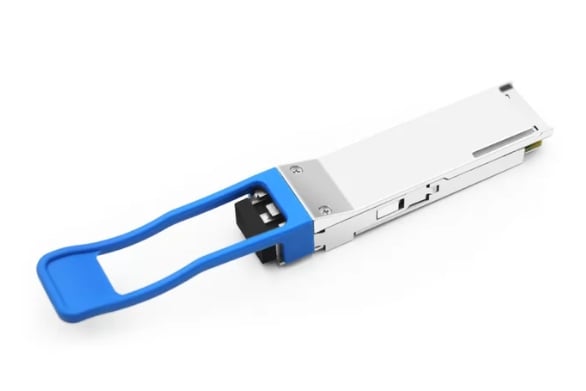
Power Efficiency in QSFP28 Modules
Depending on the specific design and workload, the power consumption of QSFP28 modules is usually between 3.5 to 4.5 watts per module. This efficiency is vital for data centers that want to maximize performance at a minimum energy cost. It achieves a better power-to-data-rate ratio than previous standards with about 0.035 to 0.045 watts per gigabit but still less efficient than 400G QSFP-DD modules which were designed for high throughput scenarios where more performance is required with less power consumption. As such, while being good enough for current needs, any design aiming at higher scaling ability as well as higher efficiency should consider moving into using 400G QSFP-DD technology.
Power Efficiency in QSFP-DD Modules
With their ability to handle faster data rates comes higher power requirements; hence, it is not surprising that these devices consume between 4.0 and 6.0 watts each, only reflecting such capability levels supported by this type of product category. The ratio between wattage used up & transferred information flow rate stands at around 0.03 – 0.06 W/Gbps which shows significant improvement over its predecessor (QSFP28) since it means more work done with less energy spent thus; enabling centers to save on costs while ensuring smooth operations are maintained throughout the establishment In situations where there’s need for wider bandwidths together with ease scalability then adoption of Q S F P D D will lead to lower power usage vis-à-vis traffic volume increase.
Impacts on Operational Costs Due to Power Usage
The effect brought about by consuming electricity has wide-ranging implications on how things get done within any organization setting, especially those dealing with large amounts of data like data center facilities because they have many servers running simultaneously day & night, thereby consuming lots of electrical energy considering all these facts it can be stated that this statement is true. The more electricity one uses, the higher their operational cost will be; hence, there must be proper mechanisms put in place so as to ensure that power is efficiently utilized, which may include such things as switching off lights not being used or even employing energy-saving equipment, among others. It also poses challenges when it comes to temperature control within such premises since over-usage could lead to overheating hence, the requirement for extra cooling systems to keep them at optimal levels, thus increasing costs more so when considering q s f p d d versus q s f p56 For that reason, it is vital for an organization to adopt energy efficient techniques which are in line with transmitting huge amounts of data at a high-speed rate without compromising anything and this can only be achieved if they purchase devices like the ones mentioned above.
In general, centers experiencing heavy traffic should go for Q S F P D D modules because apart from saving on power usage, they also enhance overall operational efficiency through faster transmission speeds.
Optical Module: Knowing Compatibility and Connectivity
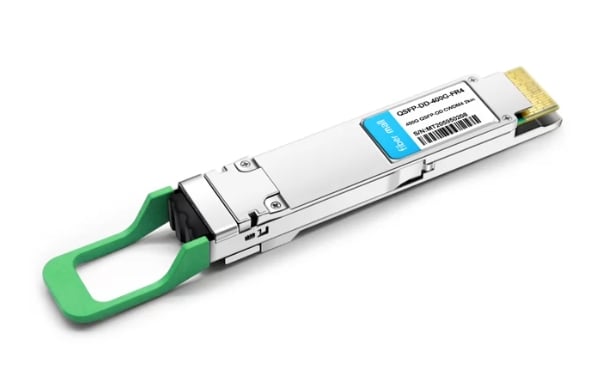
QSFP28 Optical Module Compatibility
In order to be incorporated into previous QSFP systems such as QSFP+, these modules are designed with backward compatibility in mind. They adhere to the IEEE 802.3bm standard for 100G Ethernet and can work with a number of protocols like 100GBASE-SR4 and 100GBASE-LR4, among others, thus offering flexibility in optical transmission. While choosing QSFP28 modules, ensure they are compatible with specific transceiver types, slot configurations and data rates so as to optimize network performance and reliability.
Integration with QSFP-DD Modules
Before integrating QSFP-DD modules into an already existing network environment it is necessary that one evaluates if they are compatible with the current hardware and cabling system. Additionally, switches and routers being used should support higher data rates as well as protocols associated with QSFP-DD which include 200G & 400G Ethernet. Being designed for both new systems and legacy ones ensures that this module can be used during upgrade without changing much of the infrastructure thus leading to a streamlined path for upgrading. Apart from that, operational efficiency during the integration process where infrastructure uses either 100G QSFP28 or 400G QSFP-DD modules can also be improved by ensuring the right firmware updates are done on network devices.
Backward Compatibility and Future-Proofing
Network module design should have backward compatibility so that newer models can work together with old infrastructure. For example, having a backward compatibility feature of this kind means that even though it is being deployed within legacy systems, no complete hardware overhaul will be required since they still maintain the same standards as those used by their predecessors (QSFP+). This not only lowers cost but also reduces downtime experienced when upgrading equipment’s because one does not need to replace everything at once but rather gradually over time when more funds become available.. This approach enables smooth transition towards higher speeds through adhesion present-day protocol stacks, thereby making them future proof against rapid obsolescence while at the same moment enabling the smooth transition towards higher speeds through adhesion present-day protocol stacks, thereby making them future proof against rapid obsolescence while at the same moment enabling smooth transition towards higher speeds through adhesion present-day protocol stacks, thereby making them future proof against rapid obsolescence while at the same moment enabling smooth transition towards higher speeds through a BY opting for compatible solutions now organizations are able to protect their investments from becoming out-dated and also position themselves better for growth in data transmission capabilities as scalability of such platforms becomes easier.
Understanding the Function and Use of QSFP-DD and QSFP56
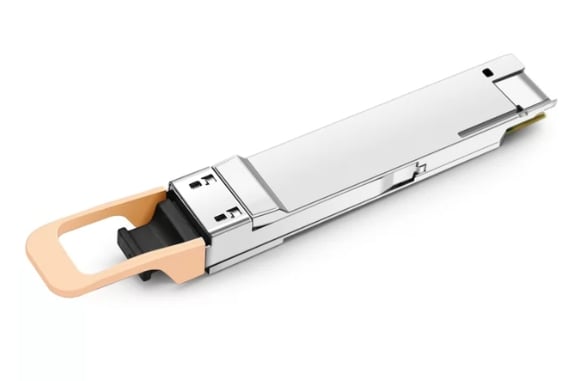
Use Cases for QSFP-DD Modules
The primary use cases for QSFP-DD modules are in data centers where there is a need for high density and high bandwidth. These modules facilitate cloud computing, virtualization, and data analytics, among other applications requiring rapid transfer of information up to 400Gbps with efficiently utilized resources. They also find applications within High-Performance Computing (HPC) environments where large datasets need to be processed fast through interconnecting servers. Additionally, telecommunication companies deploy them on backbone connections which boost network throughput while ensuring resilience at all times. Their flexibility enables seamless integration into existing systems thus enabling organizations to meet their present as well as future transmission requirements.
When To Choose QSFP56
QSFP56 should be considered when an organization requires a 200 Gbps data rate but still wants good performance per dollar, or it can compare QSFP56 vs QSFP-DD for higher specifications. It is designed for those areas with very high bandwidth demands that don’t necessarily require full capacity provided by QSFPDD modules. Moreover, this type of transceiver suits well places where there are already installed legacy systems using QSFP+ optics since it allows easy upgrading without much infrastructural changes required, hence making it cost-effective, especially in medium-density DCs (Data Centers). Besides being applicable in enterprise networks, its usage may extend further into AI/ML-related fields where cheap yet efficient handling of large volumes of data is necessary.
Combining QSFPDD with QSFP56 In Network Solutions
By incorporating both these types into one system design; businesses can achieve maximum performance optimization while controlling costs effectively within their budgets at the same time. For example, using core switches or any other device expected to handle huge amounts of traffic, as well as connecting many hosts together using a QSA adapter and deploying such devices around the edges, would work best because they provide better bandwidth without over-provisioning, unlike when dealing purely with either type alone. In this way, enterprises will be able to scale their networks better while still ensuring that each part gets enough resources needed for its operation, even in future technological advancements, without having lots of infrastructure disruptions.
Reference Sources
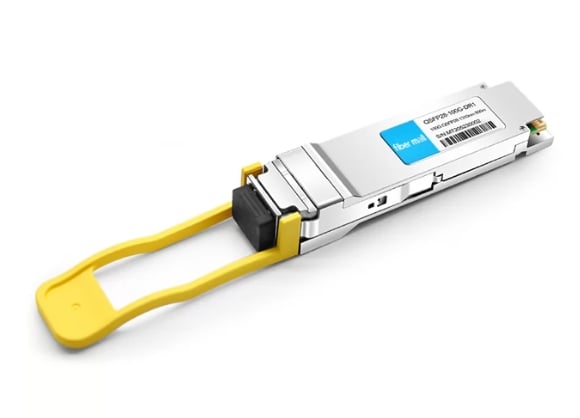
Frequently Asked Questions (FAQs)
Q: What distinguishes QSFP28 from QSFP-DD the most?
A: The difference between QSFP28 and QSFP-DD is their data rates as well as lane configurations. Four lanes at 25 Gbps each give support to data rates up to 100 Gbps by QSFP28, while on the other hand, eight lanes at 50 Gbps each are used for a maximum of 400 Gbps in the case of QSFP-DD which makes it more suitable for higher bandwidth applications.
Q: Does OSFP have the same form factor as QSFP-DD?
A: No, OSFP is different from QSFP-DD in terms of form factors although both were designed with a target to support 400 Gbps data rates. While being backward compatible with other QSFP form factors, a bigger module size does not allow OSFP backward compatibility with QSFP systems.
Q: What are some key differences between QSFP56 and QFSP-DD?
A: Eight lanes supporting up to 400Gbps are used by Quad Small Form Factor Pluggable Double Density (QSFP-DD) transceiver modules, each operating at 50 Gbp whereas Quad small form-factor pluggable (QSFP56) can only run four lanes at a rate of 50 Gbp over distances of about two meters before needing repeaters or amplifiers. The lane count and maximum supported data rate represent major differences between them.
Q: Is there any backward compatibility between these two products –QSFP28 and QFSPDD?
A: Yes, this was one of its design goals, so that users would be able to replace old generation transceivers without having to change anything else in their infrastructure thus saving money on new installations where possible which also gives them more options when planning upgrades etcetera because they can mix different types together if need be knowing all work fine together easily but yes indeed! So even though QFSP28 is not as high performing, it still can be used with the QFSPDD.
Q: Which form factor would you say is more future-proof –OSFP or QSFP-DD?
A: Both OSFP and QSFP-DD are good options for future 400G networks, but the backward compatibility of QSFP-DD with previous QSFP form factors might make it more attractive for seamless upgrades. However, larger size allows for better thermal management which means that there will never be any overheating problems even when one needs higher performance in (future) applications where this may become necessary thus making them both equally viable choices depending on specific environments etcetera…
Q: What standards do QSFP56 transceivers comply with?
A: The IEEE802.3bs standard has been met by these devices as well as the Multi-Source Agreement (MSA) for Quad Small Form Factor Pluggable Double Density (QSFP-DD), thus providing bandwidths and power efficiencies that are not possible when only following one of those two alone also its good because they follow qsfpdd multi-company to ensure interoperability within different networking equipment types while adhering to industry performance & reliability guidelines etcetera!
Q: How does the electrical interface of QSFP-DD differ from that of QSFP28?
A: An advanced electrical interface is included in the QSFPDD module which supports eight simultaneous lanes unlike four in qsfp28 hence essentially doubling data throughput capability thereby enabling applications with higher bandwidth requirements so yes indeed!!
Q: Can applications requiring high data rates be supported by QSFP28?
A: Yes, it can support up to 100 Gbps which makes suitable for 25G, 50G and 100G Ethernet among others but for instance 200G or 400G Ethernet will need either OSFP or QFSPDD however i think osfpdd might do better due its bigger size allowing better thermal management and possible higher performance in future scenarios.
Q: What mechanical interface considerations are there for QSFP-DD?
A: The mechanical interface of QSFPDD includes enhancements such as an additional row of contacts and increased module depth designed to support the higher power and thermal constraints associated with 400G transmission while still being compatible with current QSFP ports.
Q: Why should someone choose QSFP-DD for data center applications?
A: Data centers need high-density, high-performance solutions that can be upgraded with time. This is where QSFP-DD comes in because it supports speeds of up to 400 Gbps, which are compliant with IEEE802.3bs and qsfpdd msa standards while also allowing users to use their existing systems without necessarily having any compatibility issues whatsoever, so its one size fits all kind of thing if you ask me!
Related Products:
-
 QSFP-DD-400G-SR8 400G QSFP-DD SR8 PAM4 850nm 100m MTP/MPO OM3 FEC Optical Transceiver Module
$149.00
QSFP-DD-400G-SR8 400G QSFP-DD SR8 PAM4 850nm 100m MTP/MPO OM3 FEC Optical Transceiver Module
$149.00
-
 QSFP-DD-400G-DR4 400G QSFP-DD DR4 PAM4 1310nm 500m MTP/MPO SMF FEC Optical Transceiver Module
$400.00
QSFP-DD-400G-DR4 400G QSFP-DD DR4 PAM4 1310nm 500m MTP/MPO SMF FEC Optical Transceiver Module
$400.00
-
 QSFP-DD-400G-SR4 QSFP-DD 400G SR4 PAM4 850nm 100m MTP/MPO-12 OM4 FEC Optical Transceiver Module
$450.00
QSFP-DD-400G-SR4 QSFP-DD 400G SR4 PAM4 850nm 100m MTP/MPO-12 OM4 FEC Optical Transceiver Module
$450.00
-
 QSFP-DD-400G-FR4 400G QSFP-DD FR4 PAM4 CWDM4 2km LC SMF FEC Optical Transceiver Module
$500.00
QSFP-DD-400G-FR4 400G QSFP-DD FR4 PAM4 CWDM4 2km LC SMF FEC Optical Transceiver Module
$500.00
-
 QSFP28-100G-SR4 100G QSFP28 SR4 850nm 100m MTP/MPO MMF DDM Transceiver Module
$40.00
QSFP28-100G-SR4 100G QSFP28 SR4 850nm 100m MTP/MPO MMF DDM Transceiver Module
$40.00
-
 QSFP28-112G-SR4 112G OTU4 QSFP28 SR4 850nm 100m MTP/MPO MMF DDM Transceiver Module
$50.00
QSFP28-112G-SR4 112G OTU4 QSFP28 SR4 850nm 100m MTP/MPO MMF DDM Transceiver Module
$50.00
-
 H3C QSFP-100G-eSR4-MM850 Compatible 100G QSFP28 eSR4 850nm 200m on OM3/300m on OM4 MTP/MPO MMF DDM Transceiver Module
$75.00
H3C QSFP-100G-eSR4-MM850 Compatible 100G QSFP28 eSR4 850nm 200m on OM3/300m on OM4 MTP/MPO MMF DDM Transceiver Module
$75.00
-
 QSFP28-100G-IR4 100G QSFP28 IR4 1310nm (CWDM4) 2km LC SMF DDM Transceiver Module
$110.00
QSFP28-100G-IR4 100G QSFP28 IR4 1310nm (CWDM4) 2km LC SMF DDM Transceiver Module
$110.00

